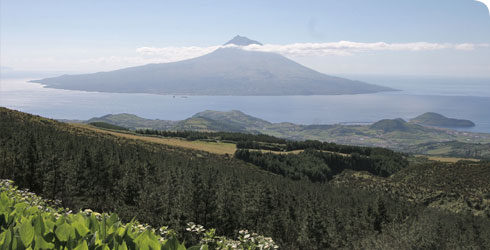Distribution
There are 2 endemic species of Euphrasia in the Azores:
- Euphrasia grandiflora occurs on the central group islands of Terceira, Sao Jorge and Pico
- Euphrasia azorica is confined to the westernmost islands of Corvo and Flores
They are closely related.
Historically, Euphrasia grandiflora probably also grew on the island of Faial, but it is now thought to be extinct in that area. Indeed, many endemic species on the Azores are threatened because of the effects of deforestation and grazing.
Euphrasia grandiflora is restricted to montane areas of the islands of the central group within the Azorean archipelago.
It was originally described from Pico, where it is now restricted to an area of small craters and lava fields on the north-eastern flank of Pico at an altitude of 750–900m.
It is more widespread but extremely local over 5km of the central volcanic ridge of Sao Jorge, where it occurs from 800–1,050m and has a single recent locality on Terceira.
There are very old unlocalised records for Faial, where suitable conditions still remain within the central caldeira.
Habitat
This plant occurs in a range of open grassy and herb-rich habitats from 600–1,200m in Erica dominated scrub, juniper woodland and semi-natural pastures.
It is usually found on steeply sloping, well-drained shallow soils on lava flows and crater flanks.
Euphrasia grandiflora is probably parasitic on a range of species but generally associated with endemic grasses of the genera Festuca, Deschampsia and Holcus, various legumes and endemic Asteraceae.
Population biology
Recent estimates suggest that the total population of this species is less than 2,000 individuals (Martins et al, 2009). Most plants are found around the highest peaks of Sao Jorge.
Most populations are small and declining - some of the smaller and more accessible populations have been lost within the last 20 years.
